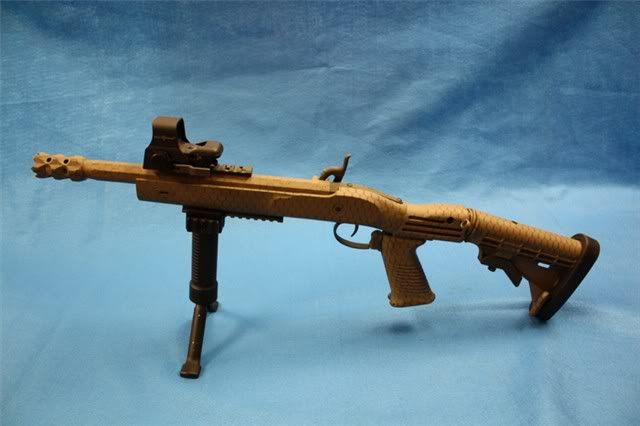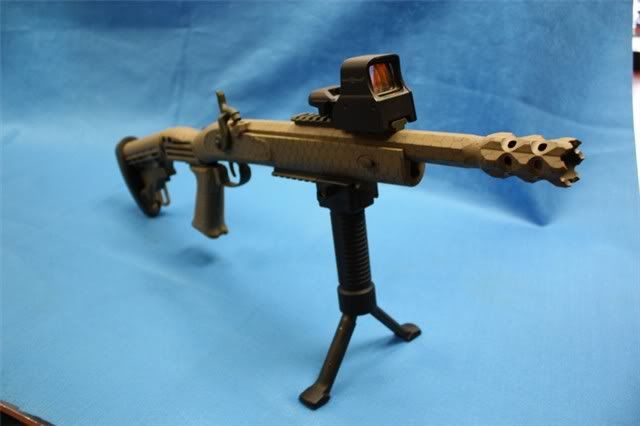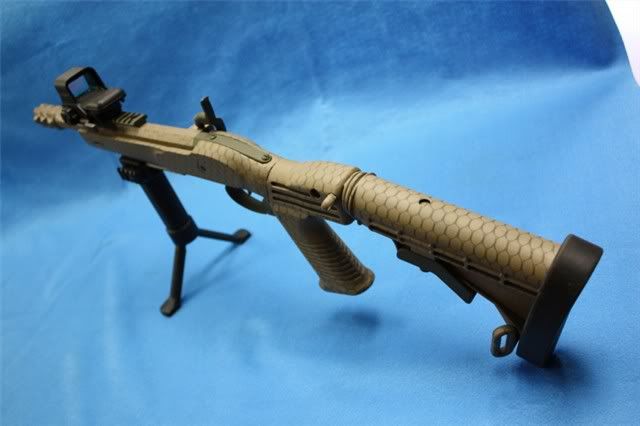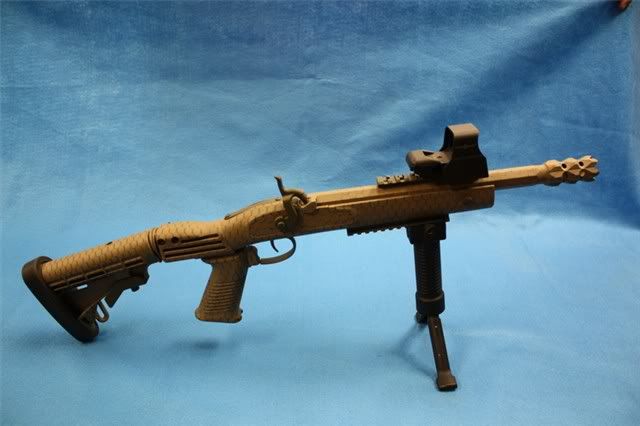Idaho Ron
58 Cal.
- Joined
- Mar 1, 2007
- Messages
- 2,729
- Reaction score
- 1,229
Kapow said:You've got it all wrong. The .50 cal PRB is equivalent to a .30/30 and the .54 is a .45/70! Hey Ron????
:rotf: :surrender:
Ya right :thumbsup: :thumbsup: :thumbsup:

Kapow said:You've got it all wrong. The .50 cal PRB is equivalent to a .30/30 and the .54 is a .45/70! Hey Ron????
:rotf: :surrender:
Loyalist Dave said:Actually, for base explanations for hunter safety classes, the .490 PRB is similar to the original loading of the .30-30, and the .530 PRB is similar to the original loading of the .35 Remington..., considering bullet weight and range limitations only. I use these two comparisons to equate the unknown black powder loads to the "known" fixed cartridge loadings, which when first introduced were hailed as excellent game getting rounds.
Loyalist Dave said:Wow that's rather insulting, and completely uncalled for.
Perhaps it's you who should re-read the posting, as I limited it to bullet weight and range in the original loadings.
The 30 WCF was first loaded with a "metal patched" bullet of 160 grains, and was quickly followed with a "metal patched" bullet of 170 grains, and from a 20" model 1894 an average velocity of under 2000 fps. Later when using jacketed bullets, normally the MV exceeded 2000 fps. Please don't confuse jacketed bullet with a metal patched bullet, as they are not the same nor do they perform the same.
Now, a .490 patched round ball of 175 grains fired with 90 grains of 2Fg produces 1950 fps MV, and with 100 grains of 2Fg produces 2052 fps MV. Hence, the 30 WCF launching a 170 grain bullet produces a MV of 2000 fps, and the .490 round ball of 175 grains may also be loaded to a MV of 2000 fps. So when considering bullet weight and range limitations only...(range limits are determined by muzzle velocity as the first factor -but not the only factor- ) the two are very similar. The comparison as I put it, stands, for the range limitations that the students understand are not correct when considering their modern rifles... keep reading and you will see why.
The .35 Remington launching it's most common and original load of a 200 grain bullet averages also at under 2000 fps MV when fired from its original rifle, the recoil operated Remington Model 8, which bleeds some of the energy into cycling the action. In a lever action rifle, the .35 Remington with that projectile averages 2000 fps MV. Now the 230 grain .530 patched round ball (though just a tad heavier) may be loaded to almost the same speed. Again they are similar in bullet weight and based on MV.
As I wrote, "There are, of course, many many more variables in what actually happens, but since the majority of hunters don't actually ever consider those variables, I need to start [emphasis added] somewhere with the novices.
It is true, most "hunters" and hunting students enter a class, without consideration of more than bullet weight and range. How far can they shoot, can it hit where it's pointed , and when it hits will it take down the deer... is all they think they need to know.
They have heard their fathers and/or grandfathers swear by the old .30-30 and the .35 Remington as a good deer getting "gun" out to 200 yards, BUT are best at 100 yards or less. They have also been often and ignorantly told that the patched round ball will not do the job at all. So in my simplistic equating of what they know (the weight of the bullet and the cartridge within which it is loaded, a la a 170 grain .30-30 and a 200 grain .35 Remington) compared to what I can show them with a round ball (at their "taught" range limit of 100 yards), they then begin to realize that black powder isn't as anemic as they have previously been taught.
As I also wrote, that's where I start. Start.
Round ball isn't the same ballistic coefficient, nor composition, as a modern, jacketed bullet. Yes, I fully understand that at 100 yards the two modern cartridges are different in velocity from the patched round ball, thus energy on impact plus terminal ballistics based on the body of the bullet are also different. I never implied in my post that I taught anything different than that, nor did I imply that I left the comparison at that simplistic level. That appears to be your assumption, and is not consistent with the full text of my post.
When teaching you first must gain the student's attetion, then break away any previously incorrect learning, before you can instruct correct information. Hunter education classes are 9 hours long, and that in no way is sufficient time to give justice to the proper use of modern rifle bullets, let along optimal use of the round and the rifle from which it is fired..., the class covers much more than modern rifle shooting in that limited time. What my comparison does, quite successfully, is to thwart the myth that the round ball will not work, and then from their I can delve into modern bullets vs. round ball, conicals, and sabots. I hopefully open their eyes to paying attention to the bullets they use in every instance, instead of the Walmart philosophy of "let me have a box of what ever is cheapest in [fill in modern cartridge name here]"
Here endeth your lesson.
:wink:
LD
Your eventual position in this thread was never in doubt...you're a modern bullet shooter...we're traditional PRB hunters.Idaho Ron said:I am done with this thread.
I know they ruined a perfectly good gun but that thing's cool! :shocked2:Idaho Ron said:I wasn't going to add any more but since your an instructor and when you need to compare the 45 to the AK 47 here is a few pictures. Ron




But to be a little be more fair...shoulder shots with shock value to the spinal column/nervous system with a CF is not the same as a heart/lung shot no matter what firearm is used for the heart/lung shot...and that of course is the typical shot used with MLs.Walks with fire said:I never had one deer move out of it's tracks when hit.
I've wondered about that myself...if the .58cal/279grn (or .62cal/325grn) ball would deliver enough energy-shock to that region to affect the vertebrae passing nearby.Walks with fire said:Shoulder shots with the .58cal